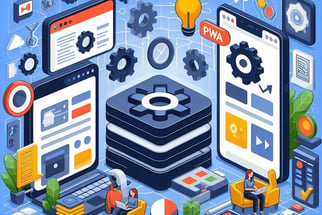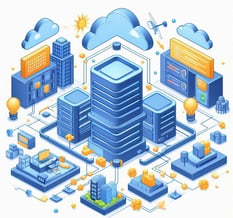The Future of Web Development: Trends to Watch in 2024
Explore the future of web development in 2024 with trends like AI integration, Progressive Web Apps (PWAs), WebAssembly, enhanced UX, and serverless architectures. Discover how these innovations can revolutionize your web projects and enhance user experiences.
FUTURE TRENDS
Ankit Prajapati
6/5/20243 min read


The Future of Web Development: Trends to Watch in 2024
Introduction
The world of web development is evolving at an unprecedented pace. With new technologies and methodologies constantly emerging, staying updated with the latest trends is crucial for developers and businesses alike. As we move further into 2024, several key trends are shaping the future of web development, promising to revolutionize the way we create and interact with web applications. In this blog post, we will explore these trends and discuss how they can be leveraged to stay ahead of the curve.
Main Trends
1. AI and Machine Learning Integration
Artificial Intelligence (AI) and Machine Learning (ML) are no longer buzzwords; they are becoming integral parts of web development. AI can enhance user experience by providing personalized content, chatbots, and recommendation systems. For example, AI-powered chatbots can handle customer inquiries 24/7, improving customer service and engagement.
Examples of AI Applications:
Personalized shopping experiences in e-commerce.
Advanced data analytics and predictive modeling.
Content creation and curation.


2. Progressive Web Apps (PWAs)
Progressive Web Apps combine the best of web and mobile apps, offering users a seamless experience without needing to download an app. PWAs load quickly, even in uncertain network conditions, and provide offline access, push notifications, and more.
Benefits of PWAs:
Improved performance and speed.
Enhanced user engagement.
Reduced development and maintenance costs.
Steps to Develop a PWA:
Ensure your site is served over HTTPS.
Create a web app manifest.
Implement service workers for offline functionality.
3. WebAssembly
WebAssembly (Wasm) is a binary instruction format that allows code written in multiple languages to run in the browser at near-native speed. This technology opens up new possibilities for web applications, making it possible to run performance-intensive tasks like games, video editing, and CAD applications directly in the browser.
Use Cases for WebAssembly:
High-performance web applications.
Enhanced functionality for existing web apps.
Cross-platform compatibility.
4. Enhanced User Experience (UX)
User experience remains a critical focus in web development. The latest UX trends emphasize simplicity, accessibility, and personalization. By adopting these trends, developers can create more intuitive and engaging websites that cater to users' needs.
Latest UX Design Trends:
Minimalistic and clean designs.
Dark mode options.
Voice user interfaces (VUIs).
5. Serverless Architectures
Serverless computing allows developers to build and deploy applications without managing the underlying infrastructure. This approach can reduce costs, improve scalability, and speed up development processes. Popular serverless platforms include AWS Lambda, Google Cloud Functions, and Azure Functions.
Advantages of Serverless Computing:
Lower operational costs.
Automatic scaling.
Faster time to market.








Conclusion
The future of web development is bright and full of possibilities. By embracing trends such as AI integration, PWAs, WebAssembly, enhanced UX, and serverless architectures, developers can create more efficient, engaging, and powerful web applications. Staying updated with these trends will not only keep you competitive but also ensure that you are delivering the best possible experiences to your users.
THE END